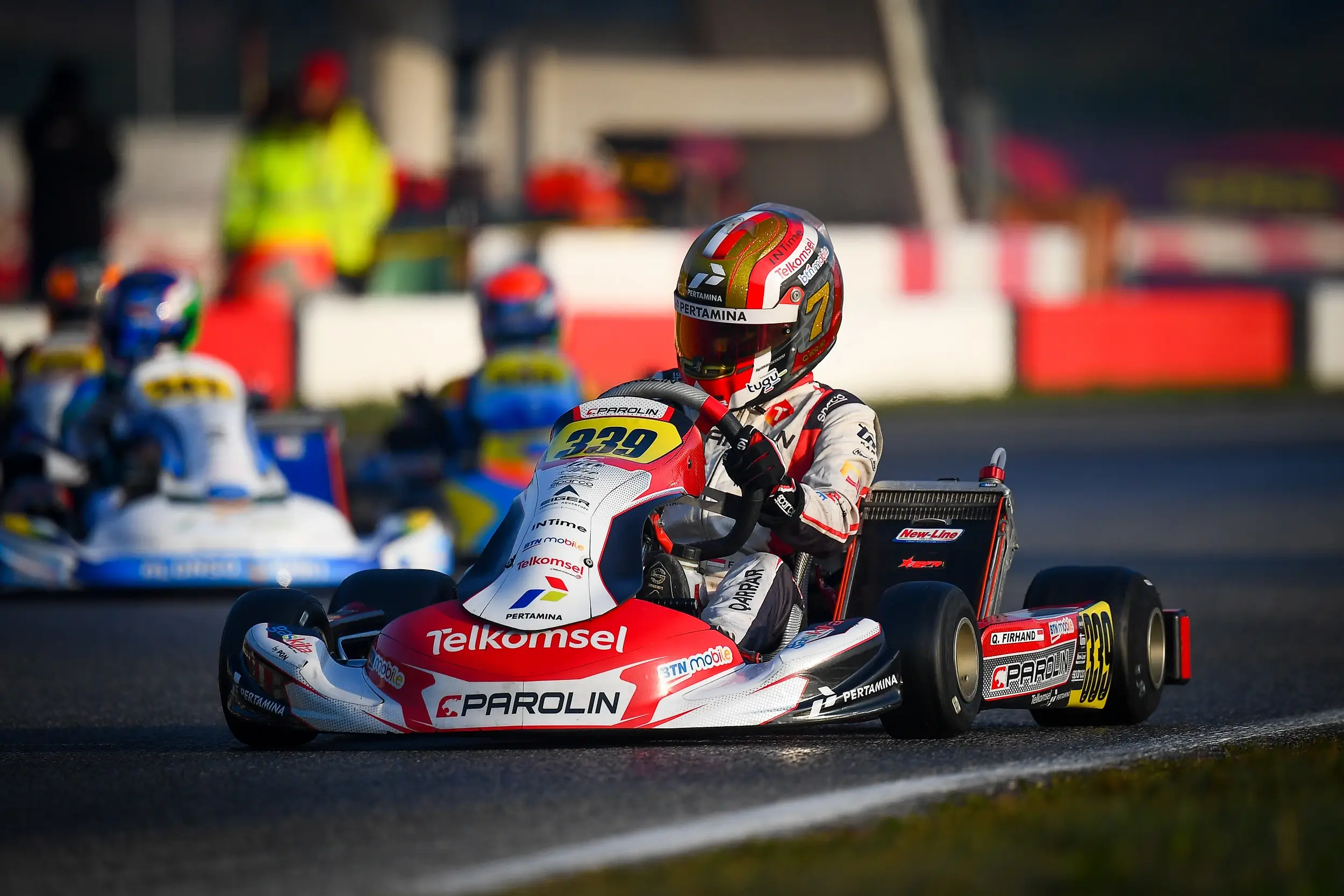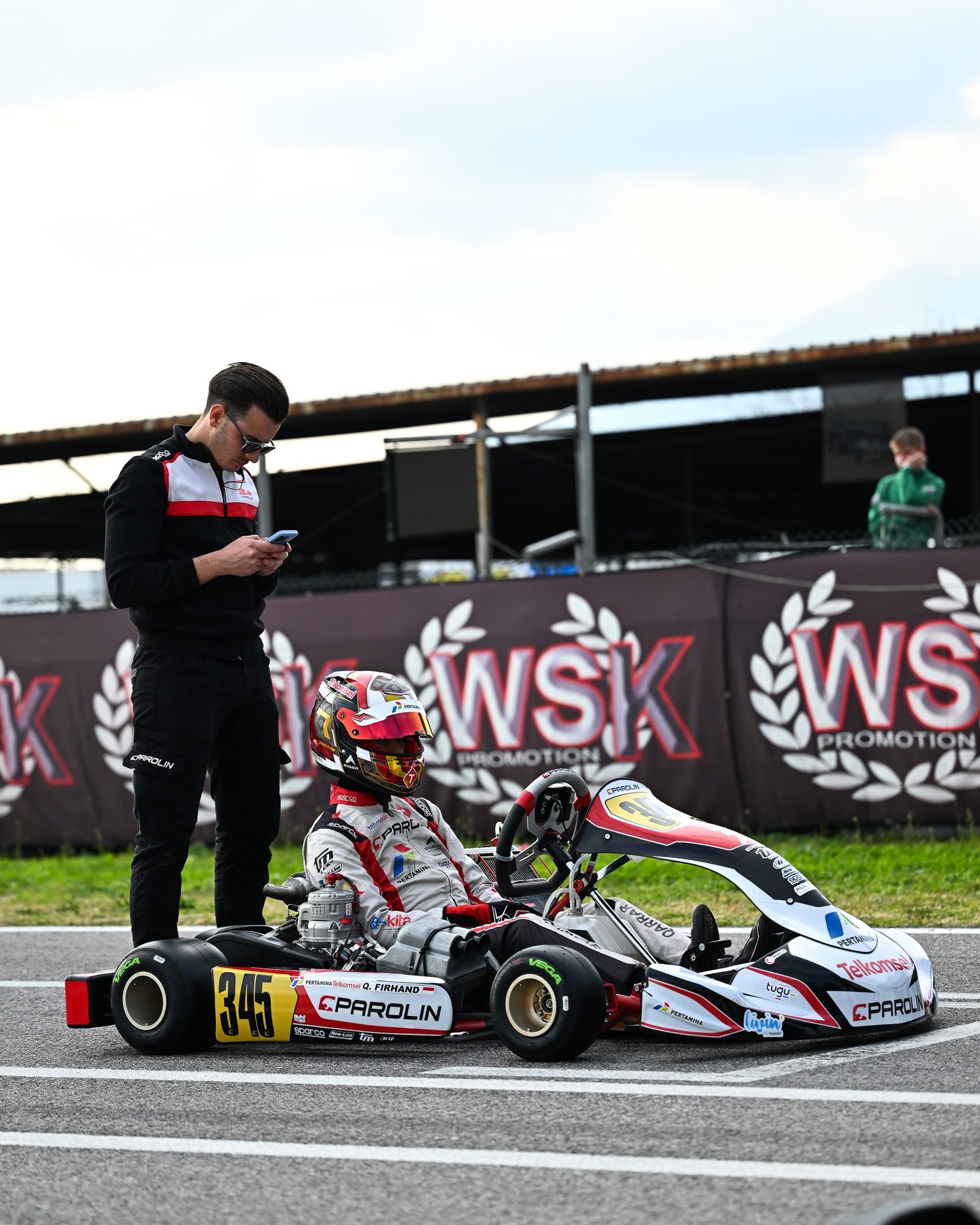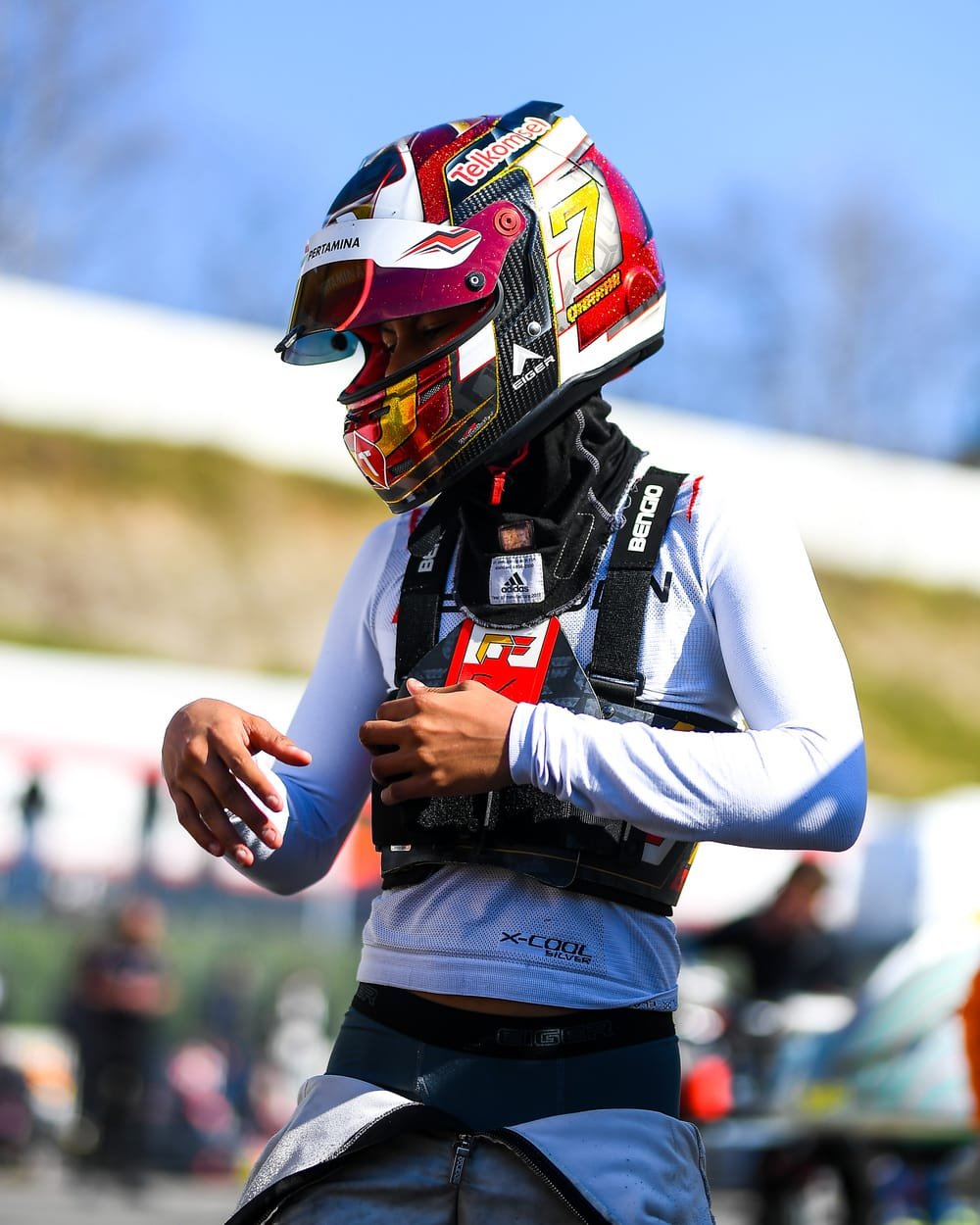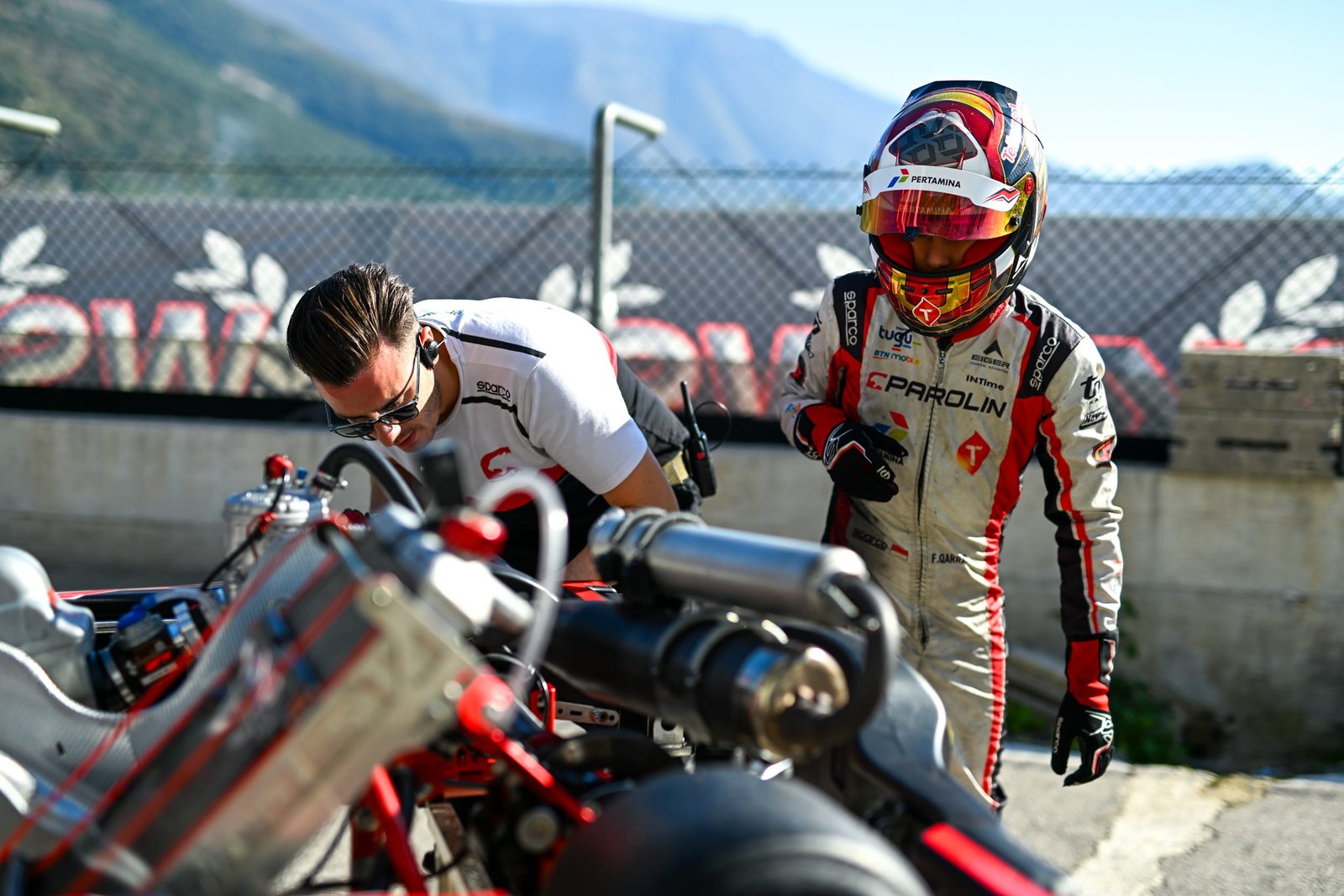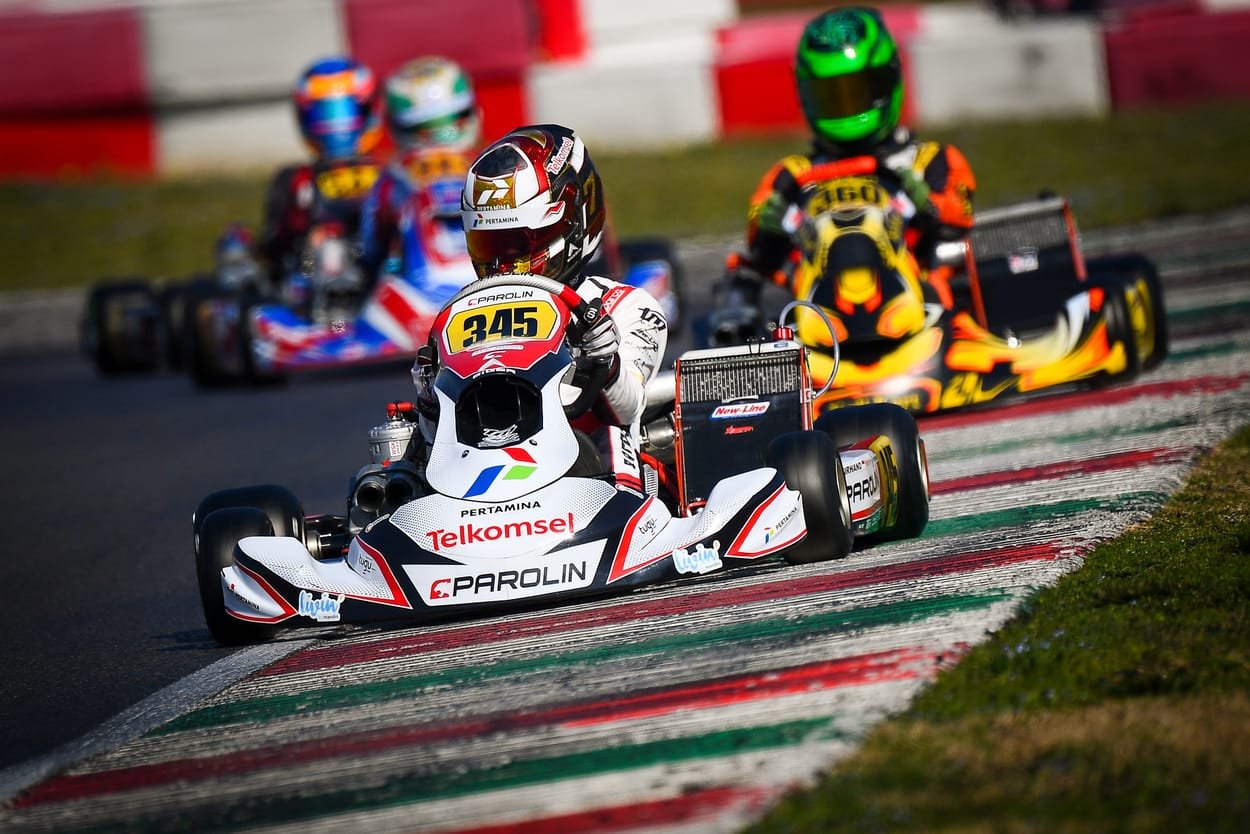Karting is the foundation of motorsport, and mastering its techniques can set you on the path to racing success. One rising star making waves in the competitive world of karting is Qarrar Firhand, Indonesia’s young talent competing internationally.
With experience in the World Karting Series and Italian Championship Karting Series, he represents Tim Parolin Racing Kart. His skills showcase how karting fundamentals translate to higher racing classes, including Formula 1 aspirations.
This guide explores actionable strategies inspired by his journey. Whether you’re an amateur or aspiring pro, learning proper techniques can elevate your performance on the track.
Who Is Qarrar Firhand? Meet Indonesia’s Rising Karting Star
Indonesia has produced some incredible young drivers in motorsports. Among them, Qarrar Firhand stands out as a talent making waves globally. His journey from Jakarta’s local circuits to Europe’s elite tracks proves dedication pays off.
From Local Tracks to International Championships
Qarrar began his career in Indonesia’s Rok Cup and national karting competitions. These early races taught him consistency and race strategy. Soon, he moved to regional events like the Rok Cup Asia and Asian Karting Open Championship.
His success caught the eye of Parolin Racing Kart, a top European team. Now, he competes in the WSK Super Master Series and FIA Karting World Championship. This leap shows how adaptability fuels growth in motorsport.
Why Qarrar’s Journey Matters for Aspiring Racers
His path mirrors Indonesia’s only F1 driver, Rio Haryanto. Both started in local competitions before going global. For young drivers, Qarrar’s story proves that skill and persistence open doors.
Competing in diverse environments sharpens versatility. Whether on Asia’s tight tracks or Europe’s high-speed circuits, adaptability is key. His rise reminds us that every champion starts somewhere.
Qarrar Firhand’s Go-Kart Racing Techniques: The Fundamentals
Winning in kart racing comes down to mastering small details that most drivers overlook. Since karts have nearly identical specs, your technique decides whether you lead or trail. Here’s how to refine two game-changing basics: seating and steering.
Perfecting Your Seating Position for Maximum Control
Your posture affects speed and stability. Lean too far forward, and you’ll understeer; sit too upright, and you lose cornering grip. Top drivers angle their seats slightly backward for balanced weight distribution.
A go-kart mechanic can tweak the chassis based on your body position. For example, tighter tracks need a more upright seat to sharpen turns. Avoid these common mistakes:
- Locking your elbows (reduces steering flexibility)
- Slouching (delays reaction time)
- Uneven weight shift (causes tire wear)
How to Grip the Steering Wheel Like a Pro
Your hands are your direct link to the kart’s response. Hold the wheel at 9 and 3 o’clock for optimal control. In wet conditions, loosen your grip slightly to prevent overcorrecting.
| Track Condition | Steering Grip Style | Finger Placement Tip |
|---|---|---|
| Dry | Firm, thumbs hooked inside | Index fingers extended for feedback |
| Wet | Loose, palms open | Pinky fingers lightly touching |
Practice finger placement drills to build muscle memory. Champions spend hours refining these micro-adjustments.
Mastering Cornering: Qarrar’s Step-by-Step Approach
Sharp turns separate great drivers from the rest. Perfecting cornering boosts lap times and race strategy. It’s about precision, not just speed.
Finding the Ideal Racing Line
The fastest path through a corner isn’t always the shortest. Study elevation changes before hitting the track. Firhand kart data shows how pros adjust lines for technical sections.
Here’s how to pick the best line:
- Enter wide to maximize turn radius
- Hit the apex at the tightest point
- Exit wide for better acceleration
European circuits demand exact braking points. Telemetry helps identify where to slow down without losing momentum.
Late Braking vs. Smooth Acceleration
Braking late can gain positions but risks tire wear. Smooth acceleration preserves grip for long races. Choose based on track layout and opponent moves.
| Scenario | Best Technique | Key Benefit |
|---|---|---|
| Overtaking | Late braking | Surprise rivals at turn entry |
| Wet conditions | Smooth acceleration | Prevents wheel spin |
| Technical tracks | Balanced approach | Saves tires for final laps |
At the ROK Cup Championship, adjusting lines mid-race led to crucial passes. Balance aggression with control to stay ahead.
The Art of Braking: Slow In, Fast Out
Braking is more than just slowing down—it’s a skill that defines race-winning laps. Perfecting this technique ensures you exit corners faster while preserving tire grip. Overheating tires can cost you 0.3 seconds per lap in critical race stages, making precision essential.
How to Identify Braking Points on Any Track
Top drivers use reference points to gauge braking zones. Here’s a proven 3-step method:
- Mark visual cues: Use track-side objects (e.g., curbs, shadows) as consistent markers.
- Adjust for conditions: Brake earlier in rain or on abrasive surfaces like Italian Championship tracks.
- Review data logs: Compare pedal pressure with brake temperature sensors to refine timing.
Avoiding Lock-Ups and Tire Wear
Locked brakes ruin tires and lap times. The Parolin team’s anti-lock setups help, but your technique matters most. Practice these drills:
| Scenario | Brake Modulation | Outcome |
|---|---|---|
| High-speed straights | Gradual pressure release | Prevents front-wheel skids |
| Tight chicanes | Pulse braking (quick taps) | Maintains steering control |
For long races, tire management strategies like smoother pedal transitions reduce wear. Data logger feedback helps spot inconsistencies in your braking curve.
Speed Secrets: How Qarrar Maximizes Straightaway Performance
Top speed isn’t just about raw power; it’s a blend of strategy and precision. On long straights, tiny adjustments can shave seconds off lap times. Here’s how elite drivers optimize every meter.
Slipstreaming Techniques for Overtaking
Drafting behind another kart reduces air resistance, giving a 0.15s boost on 500m stretches. Parolin mechanics tweak aerodynamics to amplify this effect. Key tactics include:
- Maintaining a 0.3–0.5 car-length gap to avoid turbulence.
- Timing pulls to the side just before braking zones.
- Using curved bodywork to redirect airflow.
| Scenario | Slipstreaming Approach | Risk Level |
|---|---|---|
| Dry track | Close draft (0.3 car lengths) | Moderate |
| Wet track | Loose draft (0.7 car lengths) | Low |
Maintaining Top Speed Without Sacrificing Control
At 70+ mph, steering inputs must be deliberate. Formula 4 drivers use wider arcs, but karting demands sharper adjustments. Try these tips:
- Keep hands relaxed to avoid overcorrection.
- Lean slightly into turns to balance weight.
- Test setups in wind tunnels to minimize drag.
Races are often decided by who masters these subtle skills. Practice them to gain an edge.
Tire Management Strategies From Qarrar’s Playbook
Tire management separates champions from the pack in competitive karting. Even a 0.5psi change can alter lap times by 0.2 seconds, proving every detail matters. Whether you’re racing in Italian heats or local circuits, these strategies will keep you ahead.
Adjusting Tire Pressure for Different Track Conditions
Morning sessions often need higher pressure than afternoon runs due to temperature shifts. Here’s how teams optimize performance:
- Cold tracks: Increase pressure by 1–2psi to combat grip loss.
- Hot asphalt: Reduce pressure to prevent overheating and wear.
- Humidity: Soften compounds in damp conditions for better traction.
Preserving Grip During Long Races
Consistent grip wins endurance races. Mechanics check shoulder wear during pit stops to adjust alignment. Follow these tips:
- Smooth steering inputs reduce tire scrub.
- Avoid late braking in early laps to save rubber.
- Use FIA inspection protocols post-race to analyze wear patterns.
In motorsport, Qarrar’s role highlights how tire prep bridges talent and results. Apply these tweaks to see immediate improvements.
Race Starts: Launching Like a Champion
The first few seconds of a race can determine your entire performance. A 0.01s faster start often means gaining two positions by the first lap. Perfecting your launch requires precision in clutch control, throttle timing, and light reactions.
Clutch Control and Throttle Timing
Hold RPMs just below the engagement point for standing starts. Elite drivers warm up clutches with brief revs before the lights sequence. Avoid these mistakes:
- Dumping the clutch too quickly (causes wheel spin).
- Over-revving (wastes torque and burns tires).
- Ignoring track grip levels (adjust for wet/dry conditions).
Reacting to the Lights: Practice Drills
Behind-the-scenes karting teams use light simulators to train reflexes. Try these drills:
| Drill | Focus Area | Benefit |
|---|---|---|
| Red-light holds | Timing consistency | Reduces false starts |
| Wet-start simulations | Throttle modulation | Improves traction control |
Team radios often cue drivers during launch sequences. Sync your actions with their calls for split-second advantages.
Adapting to Different Tracks: Qarrar’s Circuit Tips
Every track has its own personality. Some test your reflexes with tight corners, while others challenge your speed on long straights. Learning to adapt quickly can make or break your performance in the world championship.
Technical Tracks vs. High-Speed Circuits
Technical tracks like Monaco demand precision in every turn. Hairpin corners require lower gear ratios and early braking. High-speed circuits, on the other hand, focus on maintaining momentum through sweeping bends.
Here’s how to adjust your approach:
- For twisty sections, prioritize smooth steering inputs to preserve tires
- On fast layouts, optimize aerodynamics by tucking in on straights
- Study elevation changes that affect braking points
| Track Type | Key Focus | Setup Adjustment |
|---|---|---|
| Technical | Corner exit speed | Softer suspension |
| High-speed | Straight-line stability | Stiffer rear wing |
How to Study a New Track Before Racing
Preparation separates top drivers from the rest. Before any event, elite racers spend hours analyzing every detail. They walk the track with engineers, noting subtle asphalt ripples that affect grip.
Try these proven methods:
- Use drone footage to identify elevation changes invisible at ground level
- Simulate the circuit for at least 10 hours before arriving
- Check weather forecasts to plan tire strategies
Behind the scenes, karting teams rely on meteorology apps for real-time updates. This attention to detail creates champions who can adapt to any condition.
Mental Toughness: How Qarrar Stays Focused Under Pressure
Mental strength is just as crucial as physical skill in competitive motorsports. For young drivers, handling stress can mean the difference between podium finishes and burnout. Studies show 68% of junior racers quit due to unmanaged pressure—but champions like Qarrar Firhand prove it’s conquerable.
Pre-Race Routines to Calm Nerves
Elite drivers rely on rituals to stay sharp. Qarrar’s 10-minute visualization technique involves mentally rehearsing each turn before hitting the track. This primes focus and reduces surprises.
Nutrition also plays a role. Hydration and light, protein-rich meals stabilize energy without sluggishness. Some F1-inspired tricks:
- 4-7-8 breathing (inhale for 4 sec, hold for 7, exhale for 8)
- Dynamic stretches to lower cortisol
- Team huddles for morale boosts
Turning Mistakes into Learning Opportunities
After a 2023 ROK Cup collision, Qarrar rebounded by analyzing telemetry with Parolin engineers. Their debrief framework focuses on solutions, not blame. Here’s how to adapt it:
- Identify the error (e.g., late braking)
- Isolate contributing factors (tire temp, track conditions)
- Test fixes in practice sessions
Mental pressure fades when you view setbacks as data points. Champions don’t avoid mistakes—they mine them for speed.
Competition Strategies: Beating Rivals Like Qarrar Does
Racing isn’t just about speed—it’s a chess match at 60 mph. To dominate in competitions, you need a playbook for outsmarting opponents. The best drivers study rivals like coaches analyze game tape.
Analyzing Opponents’ Weaknesses
Top racers review hours of footage to spot patterns. Look for these tells:
- Braking inconsistencies: Late brakers often overshoot turns under pressure.
- Sector time drops: Slow middle sectors hint at cornering struggles.
- Line rigidity: Drivers who never adjust their racing line are predictable.
In international karting championships, teams use spotters to relay real-time gaps. Sync with your crew to exploit vulnerabilities.
When to Attack and When to Defend
Timing is everything. Use this cheat sheet:
| Situation | Best Move | Risk Level |
|---|---|---|
| Opponent tires fading | Aggressive late passes | Low (high reward) |
| Last 3 laps | Defensive inside lines | Medium (block safely) |
Psychological edges matter too. Fake a wide line before tightening up—many drivers will follow and lose momentum.
Data Analysis: How Qarrar Uses Telemetry to Improve
Modern karting relies on data as much as driver skill—here’s how to use it. Advanced systems like Parolin’s track 22 parameters at 100Hz, revealing insights invisible to the naked eye. This isn’t just numbers; it’s your roadmap to faster laps.
Interpreting Lap Time Breakdowns
Every lap tells a story. Steering angle variance shows if you’re overcorrecting. Brake trace overlap highlights consistency issues. Champions like Qarrar review these nightly with engineers.
Key metrics to watch:
- G-force vs. tire slip: High lateral Gs with low slip mean ideal grip.
- Throttle traces: Sudden spikes waste fuel and destabilize the kart.
Fine-Tuning Your Setup Based on Data
Adjustments start with yaw rate analytics. If the kart over-rotates mid-corner, caster angles need tweaking. Predictive models also help prep for weather changes.
| Data Point | Adjustment | Result |
|---|---|---|
| High brake temps | Softer pads + earlier points | Less fade in final laps |
| Low exit speed | Stiffer rear axle | Better acceleration |
Small changes compound over races. Let data logger secrets guide your decisions.
Physical Fitness for Karting: Qarrar’s Training Regimen
Physical fitness is the hidden engine behind every successful karting career. While technique gets attention, your body must endure 45 minutes of sustained 2G lateral forces. Without conditioning, even skilled drivers fade in final laps.
Neck and Core: Your Secret Weapons
Neck strength prevents fatigue during high-speed turns. MotoGP trainers recommend isometric holds—press your palm against your forehead while resisting motion. For cores, try plank rotations to mimic steering tension.
Heat chambers help acclimate to tropical circuits. Pair these with grip enhancers like stress balls during travel. Recovery matters too—ice baths reduce inflammation after back-to-back races.
Endurance Drills for Marathon Races
Long events test stamina. Simulate race conditions with interval training:
- Cycle 30 seconds sprint, 90 seconds rest (repeat 10x)
- Hydrate with electrolyte mixes for temperate climates
- Use weighted vests to build resistance
| Training Type | Frequency | Benefit |
|---|---|---|
| Neck isometrics | Daily, 5 mins | Reduces mid-race strain |
| Heat exposure | 2x/week | Boosts sweat efficiency |
Combine these with telemetry reviews to tailor workouts. A fit driver outlasts rivals when it counts.
Teamwork Behind the Scenes: The Role of Mechanics
Behind every winning driver is a skilled team turning wrenches and crunching data. While you focus on the track, mechanics fine-tune your kart’s performance. Their adjustments shave off seconds and turn close races into victories.
Communicating With Your Pit Crew
Clear feedback is key. Instead of saying “the kart feels loose,” specify when it happens—like mid-corner or under braking. Top teams use numbered scales (e.g., “oversteer level 3”) to quantify issues.
The Parolin crew once swapped an engine in 8 minutes during a red flag. This saved a podium finish in the 2024 Lombardy heat. Their secret? A 5-step pre-race checklist:
- Tire pressure calibrated to track temperature
- Gear ratios matched to straightaway length
- Brake bias tested for elevation changes
- Throttle response verified via data loggers
- Steering free play adjusted to driver preference
How Setup Changes Affect Performance
Small tweaks create big results. A 0.5° camber shift can improve cornering grip by 12%. Gear ratio adjustments impact acceleration more than top speed.
| Adjustment | Performance Impact | Ideal For |
|---|---|---|
| Softer front springs | Sharper turn-in | Technical tracks |
| Higher ride height | Better bump absorption | Uneven surfaces |
Post-session, mechanics review telemetry with engineers. They correlate your feedback with sensor data to pinpoint fixes. This teamwork turns raw speed into consistent wins.
From Karting to Formula Racing: Qarrar’s Transition Plan
The leap from karting to formula racing demands more than just speed—it’s a strategic evolution. Young talents must adapt their skills while navigating new challenges like aerodynamic sensitivity and complex vehicle dynamics. This progression mirrors the path of Indonesia’s motorsport icons.
Skills That Transfer to Single-Seater Cars
Racecraft developed in karting provides a crucial foundation. The ability to read opponents and maintain consistent lines becomes even more vital in formula cars. These core competencies give drivers an edge:
- Car control: Karting’s direct steering translates to precise inputs in open-wheelers
- Race awareness: Spatial judgment prevents rookie mistakes during wheel-to-wheel battles
- Throttle modulation: Gradual power application remains key for traction control
Building a Pathway to Higher Championships
Advancing requires more than talent alone. Strategic planning and resource management determine who reaches professional tiers. Consider these critical steps:
- Complete FIA Super License point requirements through sanctioned events
- Train on simulators that replicate formula steering ratios and downforce effects
- Develop sponsorship proposals highlighting marketability and results
| Career Stage | Focus Area | Key Benchmark |
|---|---|---|
| Senior kart class | Consistent podiums | WSK Finals participation |
| Formula 4 | Technical adaptation | Top-10 championship finish |
Successful transitions balance competition results with off-track development. Like many rising stars, the journey involves calculated risks and continuous learning.
Overcoming Setbacks: Qarrar’s Advice for Young Racers
Every racer faces setbacks—how you respond defines your career. For young drivers, crashes and mechanical failures can feel devastating. But champions like Qarrar Firhand prove resilience turns obstacles into opportunities.
Handling Crashes and Mechanical Failures
When an engine fails mid-race, panic won’t help. After Qarrar’s 2023 setback, his team focused on solutions, not blame. They rebuilt the kart overnight, earning respect for their grit.
Use these post-crash protocols:
- Reset mentally: Take 10 deep breaths, then assess damage calmly.
- Communicate transparently: Explain issues to sponsors—honesty builds trust.
- Apply the 24-hour rule: Analyze failures after emotions cool.
Staying Motivated After a Bad Race
Losses teach more than wins. Qarrar mentors Indonesian rookies by reviewing race footage together. They pinpoint one improvement area per session, like braking consistency.
Turn setbacks into comebacks:
- Highlight progress in media interviews—growth stories inspire fans.
- Train harder on weak spots (e.g., wet-track starts).
- Celebrate small wins, like cleaner lap times.
In motorsport, Qarrar’s role shows that perseverance outweighs perfection. Every champion was once a beginner who refused to quit.
Start Applying Qarrar Firhand’s Techniques Today
Now that you’ve learned these pro-level strategies, it’s time to hit the track. Small adjustments in seating, braking, and cornering can transform your performance. Consistency is key—practice one skill at a time until it becomes instinct.
Want to take it further? Indonesia’s karting development program scouts young talent nationwide. Email their coaches for tryout details. Teams like Parolin Racing also host open trials—check their website for upcoming dates.
For serious competitors, data tools like AiM Solo 2 or RaceStudio help analyze laps. Compare your metrics with champions to spot gaps. Keep refining, and soon you’ll see podium-worthy results.
Ready for the next step? Download free track maps or join local leagues to test your skills. Every champion started where you are now—gear up and go!

